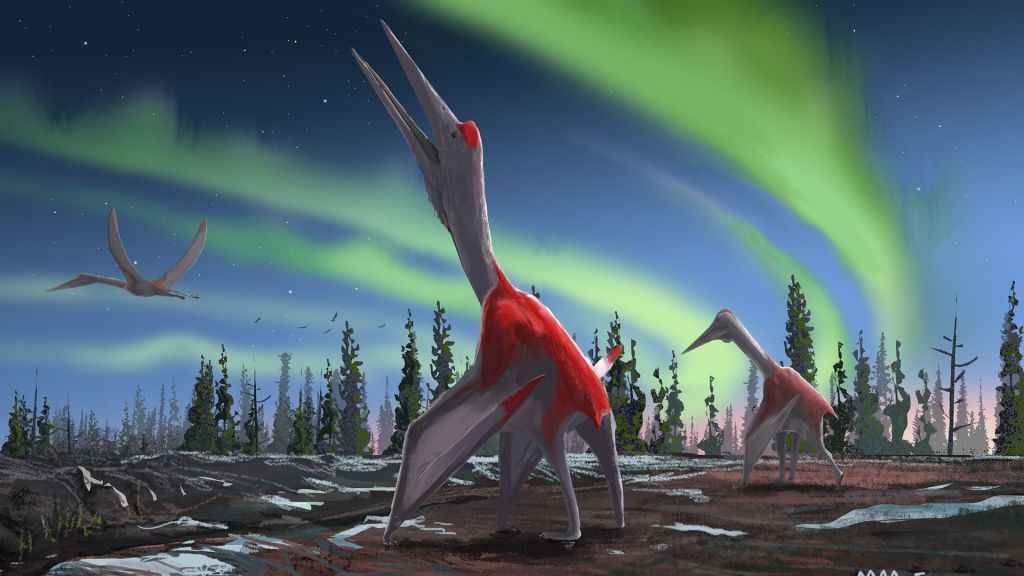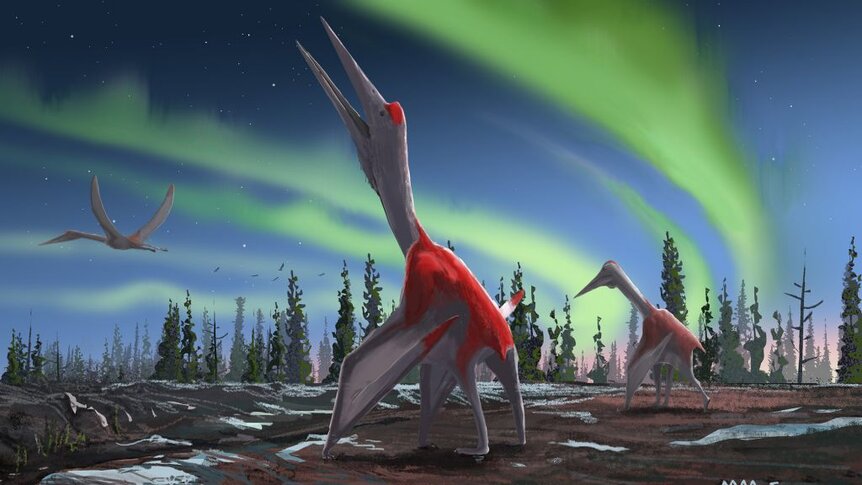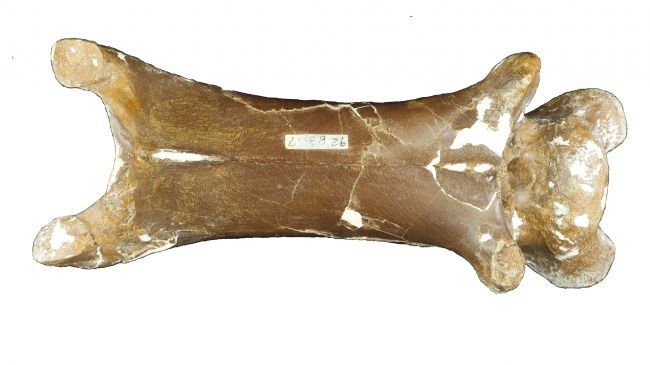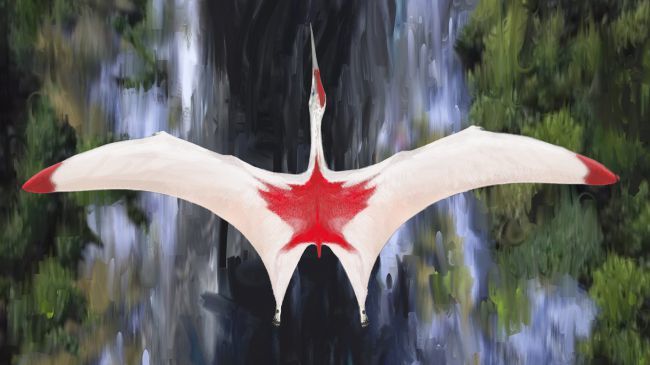Create a free profile to get unlimited access to exclusive videos, sweepstakes, and more!
Newly discovered giant pterosaur is one of the biggest flying reptiles ever found

Canada may be brimming with pride with their love of ice hockey, scenic natural beauty, and state-of-the-art TV and film production facilities, but now they can add a newly identified species of giant pterosaur to their impressive list of national treasures.
Paleontologists have discovered the remains of a prehistoric flying reptile with an epic wingspan of 33 feet in the province of Alberta that will enter the record books as the largest ever found in our neighboring country of maple syrup and moose. This airplane-sized species of XXL pterosaur, which ranks as a member of a group known as azhdarchids, has been officially named Cryodrakon boreas. The imposing title originates from ancient Greek words whose chilling translation means "cold dragon of the north winds."
Fossilized bones of Cryodrakon boreas were initially unearthed decades ago, but were mistakenly thought to be remnants of another North American azhdarchid called Quetzalcoatlus, one of the most magnificent flying animals in all of prehistory.
However, according to a new study led by David W.E. Hone, Michael B. Habib & François Therrien published in the Journal of Vertebrate Paleontology, the additional Cryodrakon specimens found at excavation sites in Dinosaur Provincial Park in Alberta date to approximately 77 million to 74 million years ago, during the Cretaceous period. They represent a newfound species that is now considered to be the first new type of giant pterosaur ever revealed in Canada.
Using the measurements of one ginormous neck bone seeming to belong to an adult animal, researchers have estimated that Cryodrakon most likely had a wide wingspan of 33 feet from side to side, giving it a fighter-jet size comparable to its humongous close relative Quetzalcoatlus.
According to lead study author Hone, director of the biology program at Queen Mary University in London, Azhdarchids once existed on all continents except Antarctica and Australia, and are notorious for having supersized heads, elongated necks, long legs, and large feet. Sadly, due to their thin bones and enormous size, very few fossils of the soaring giants remain.
Paleoartist David Maas created the pair of stirring renderings seen above of what Cryodrakon might have looked like gliding along in primeval skies, including a distinctive color scheme akin to the familiar maple leaf pattern emblazoned on the national flag of Canada.
"The colours are not meant to be taken literally, sadly we don't know the pattern of this animal in life but while it is meant to be a fun tribute to Canada, this a plausible colouration," Hone tells SYFY WIRE. "We have some modern birds like cattle egrets that are also white with a flash of colour."





























